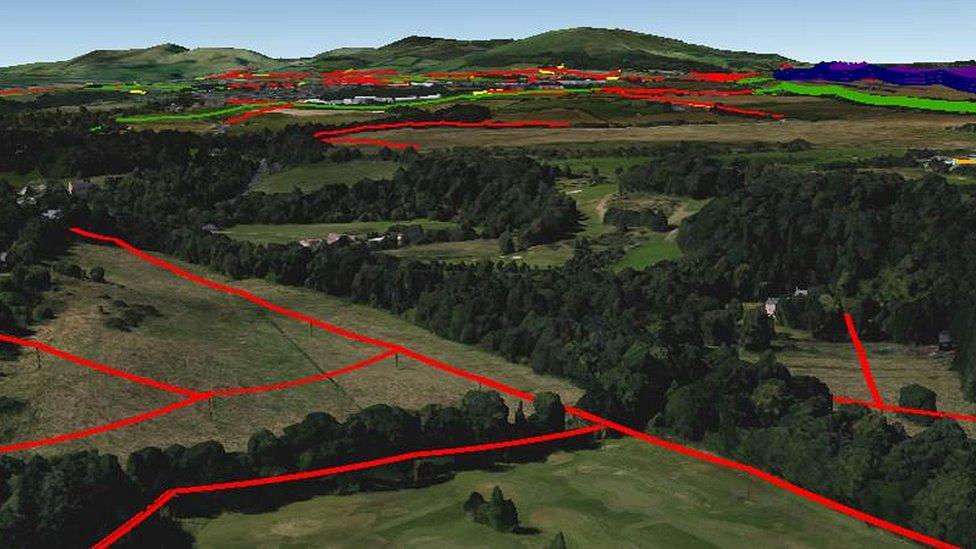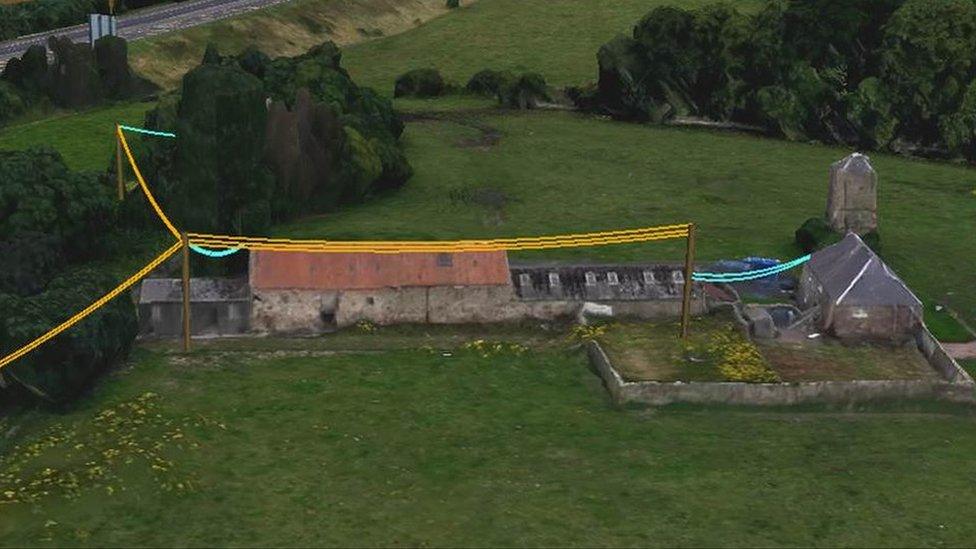Scottish Power using aerial laser scanning to protect supplies
- Published

Aerial laser mapping has helped Scottish Power to target the work
Scottish Power is spending £36m on managing trees next to power lines, in a bid to reduce damage during storms.
The contracts, over the next three years, mean employment for 200 people across southern and central Scotland, north Wales and Merseyside.
The energy company has used aerial 3D laser mapping technology to assess the areas of most risk.
Scottish Power said that could help assess tree growth rates in order to plan maintenance.
It has awarded nine contracts across the areas involved to carry out the "vegetation management".

The maps plot all the trees close to power lines
Guy Jefferson, SP Energy Networks distribution director, said: "Managing trees next to power lines is one of the most important maintenance programmes we deliver to keep the lights on.
"It means that during severe winter storms we can reduce the number of properties affected by power cuts, and reduce the time to reconnect those who do.
"We will always need people on the ground to carry out the work, and we are pleased that our contracts will support hundreds of jobs in Scotland, the north west of England and north Wales."
Plot every tree
He said information being gathered from the air would help the company target its efforts.
"Chainsaws on the ground are now also supplemented by lasers in the sky, and our detailed 3D maps allow us to plot every tree next to our power lines and schedule required maintenance," he said.
"Our system also accounts for regional variations, such as the fact that trees in the north of Wales grow on average 2cm more every year than those in the south of Scotland, to make sure we are cutting the right trees at the right time."
He said the action being taken to tackle the issue was already having an impact.
"In exceptional storm events we will still see trees coming down and affecting power lines, as we have witnessed in the last few winters," he said.
"However, because of significant investments in tree management we are seeing up to 25% less fault activity during poor winter weather than we did a decade ago.
"We aim to improve these figures even further in the coming years."